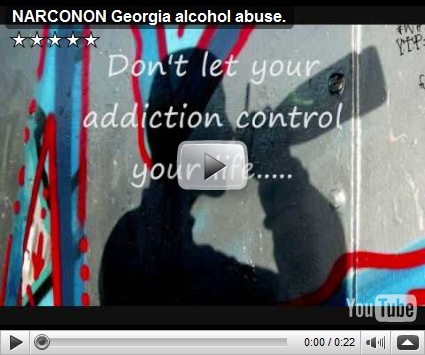Thursday, July 2, 2009
Dark Ages
THE DARK AGES
Intense marketing and a resultant 150% rise in the numbers of prescriptions written has resulted in a growing number of people addicted to prescription drugs.
In a recent press conference Joseph A. Califano Jr., the National Center on Addiction and Substance Abuse (CASA) at Columbia University’s director and president said:
"Aggressive marketing of controlled drugs to physicians . . . is designed to increase profits with little regard for abuse potential, Our nation is in the throes of an epidemic of controlled prescription drug abuse and addiction."
The ease by which many Americans can get a prescription for powerful pain medications and psychiatric drugs is alarming.
Drug seekers are people that are trying to get high. They will say or do almost anything to get what they want. Health care professionals who are just trying to help are unfortunately easy prey for these individuals.
Very few physicians receive any training in spotting drug seeking behavior. Pharmacists report more training but it is not they that actually write the prescriptions.
More than 15 million Americans abuse controlled substances—double the amount from a decade ago, according to a report issued by CASA. This represents a clear problem for America because there is virtually no increase in drug treatment available.
Califano said, “I am disturbed that more than 28 percent of pharmacists say they fail to regularly validate the prescribing physician's Drug Enforcement Administration (DEA) registration number when dispensing controlled substances.Today more people are abusing controlled-prescription drugs than the combined number who abuse cocaine, hallucinogens, inhalants, and heroin.”
Without educating pharmacists and physicians who prescribe these drugs on the signs for potential abuse, drug companies are guilty of criminal negligence.
Unless there is a dramatic increase in the availability of drug treatment for those already addicted, the epidemic will only increase.
History will view this era as a dark age – if civilization exists long enough to move into a more enlightened age.
Narconon drug treatment 877-413-3073
Wednesday, July 1, 2009
Prescription Drugs
Michael Jackson’s Death Calling Attention to Prescription Drug Abuse
Close friend to Jackson, Deepak Chopra, reported that Jackson had asked him for prescriptions to pain killers in the past. Chopra said that he then realized that Michael must have been asking many people for prescriptions to the powerful drugs.
In an article in the Huffington Press, Chopra in part blames Jackson’s dependence on these drugs on medical colleagues who failed to realize Jackson’s growing addiction could lead to his death.
Jackson is known to have taken prescriptions ranging from Xanax to Demerol.
Oxycodone and hydrocodone are both synthetic opiate pain relievers similar to Demerol which Jackson is reported to have been injected with shortly before his cardiac arrest.
It is unfortunate that prescription drug abuse becomes alive as a topic for media discussion after a celebrity death. Anna Nicole’s and Heath Ledger’s deaths took center stage earlier, but the problem with prescription medication abuse continued to increase and emergency rooms are still seeing too many accidental overdoses.
In a recent press conference Joseph A. Califano Jr., the National Center on Drug Addiction and Substance Abuse (CASA) at Columbia University’s director and president said:
"Aggressive marketing of controlled drugs to physicians . . . is designed to increase profits with little regard for abuse potential, Our nation is in the throes of an epidemic of controlled prescription drug abuse and addiction."
The ease by which many Americans can get a prescription for powerful pain medications and psychiatric drugs is alarming.
More than 15 million Americans abuse controlled substances—double the amount from a decade ago, according to a report issued by CASA. This represents a clear problem for America because there is virtually no increase in drug treatment available and no controls on marketing.
Narconon of Georgia provides drug treatment and education for the entire southeast region. Narconon Drug Rehab of Georgia is a non-traditional drug abuse treatment program.
NARCONON 877-413-3073
Reflection
NARCONON REFLECTION
Here is a Narconon reflection – written by someone who was abusing alcohol – but written for anyone who is abusing any drug. Whether it is oycontin, adderal, heroin, cocaine, methamphetamine or any drug of abuse, the Narconon program is here to help you.
“Today in class I learned that pinpointing my problem and releasing my energy on it – I can let the thought pass. I think a problem is a kind of blemish to my well being and healthy life style – a blemish that can vanish with the right medicine. The medicine is how I handle situations – and I can handle them the right way from now on from what I have learned.
The medicine is also in my action and thoughts. I will use my mind and strength to touch and get what I want. It is my choice, now that I know right from wrong.
I am a stronger individual today.
This can also apply to unhealthy relationships, friendships and disagreements.
I believe that sometimes it is just better to let things go and avoid trouble in my life.”
Simple realizations like this can take the course of someone’s life and move it in a different direction.
Narconon is the New Life Drug Treatment Program
877-413-3073
Wednesday, May 20, 2009
William Benetiz Founder
http://www.bloglines.com/blog/NarcononGaMichelle
Narconon Founder Went Above and Beyond to Help His Fellow Man
It did not take long for the Narconon network to become well established throughout the world.
Trois-Rivieres, Quebec 5/14/2009 03:05 PM GMT (TransWorldNews)
By the year 1981, many Narconon centers were fully operational and fully staffed, and were already saving lives from the chains of addiction. Mr. Benitez had completed a monumental task in establishing such a successful drug and alcohol rehabilitation program. At this point in his life Mr. Benitez made a decision to move back to Arizona.
It was in Arizona that William Benitez took on a job within the same justice system that held him prisoner for so many years. At that time the Department of Corrections Director in Arizona was a gentleman named Ellis McDougall. Mr. McDougal hired Will as a inmate liaison, his formal title was that of a Hearing Officer for the Corrections Director located at the Central Headquarters in Arizona. One of the main duties of this position was to handle all of the inmate complaints, what better job for a person who by this point in his life had accomplished so much in helping others.
(William Benitez with fellow inmates)
Mr. Benitez worked in this position for quite some time, and continued his on going support with the expansion of the Narconon network. The story of him working at the same place where he spent a large portion of his life is a remarkable one. He was so dedicated in helping others, and knew exactly what steps to take to help his fellow man. It is only fitting that Will chose to work with the same people that gave him the opportunity to start a Narconon therapy group.
After William Benitez’s death in 1999, the Narconon network has continued to expand across the globe. Currently there are 150 different centers located in over 40 different countries. Because of Mr. Benitez’s dedication and accomplishments, the Narconon program has been able to save many lives from the chains of addiction. This one man is responsible for creating and starting a drug and alcohol rehabilitation program that has reunited families, healed communities, and educated tens of thousands about the harmful effects of drugs. The Narconon network has a very bright future, and will continue to do its part in making this a drug free planet.
Monday, May 18, 2009
Alcohol Addiction
Narconon Drug Rehab in Georgia released these facts about alcohol abuse:
More money is spent on alcohol advertising than on any other product. (What most people forget is that alcohol is the most widely abused drug on the planet.)
Alcohol addiction is one of the toughest to overcome, especially with televisions making alcohol look tasty, sensuous, sexy, or even smart. (The irony here is that if you have a drunk person, they are none of these things. How is a stumbling and slurring person who has had too much to drink sexy or smart?)
The statistics of alcohol abuse are that it leads to permanent damage of vital organs, several different types of cancer, gastrointestinal irritations, nausea, diarrhea, ulcers, malnutrition, nutritional deficiencies, sexual dysfunctions, high blood pressure, and lowered resistance to diseases. (They don’t tell you these things in their commercials.)
It is estimated 6.6 million children live in homes with at least one alcoholic parent.
Eighty percent of American high school students have tried alcohol and sixty-two percent of these teenagers have been drunk.
There are approximately 14 million people addicted to alcohol in the United States alone.
Alcohol kills 65 people per day on our roads; this accounts for 50% of all crashes.
Almost half of all murders, suicides and accidental deaths involve alcohol.
Executive Director, Mary Rieser says, “These are the facts. They are quite different than what is portrayed by the marketing and advertising agencies. The truth is that 1 of every 13 Americans is addicted to alcohol, and we see more and more people suffering from alcoholism everyday.”
For more information on drug addiction rehabilitation or drug education, call Narconon of Georgia at 1-877-413-3073.
Copyright © 2008. Narconon of Georgia Inc.(www.drugsno.com) Call 1-877-413-3073. All rights reserved. Narconon and the Narconon Logo are trademarks and service marks owned by the Association for Better Living and Education International and are used with its permission.
Wednesday, May 13, 2009
Remembering Benjamin Franklin
http://www.bloglines.com/blog/NarcononGaMichelle
REMEMBER WHAT BENJAMIN FRANKLIN SAID
This bill is bitter sweet. While we are offering more funding for Substance Abuse services we are cutting our school prevention programs, which have been in place since Nancy Regan told us to “Just Say No.
Without the message to kids to “Just say No” more of them will say “yes”. They are not only saying “yes” to the dealer in the school yard, but they are saying “yes” to the drug Cartels and possibly years of misery before they find their way into one of the new government funded drug treatment programs.
We need to remember what Benjamin Franklin said. “An ounce of prevention is worth a pound of cure.”
Abuse of heroin, methamphetamine, pot cocaine and other drugs can be prevented without a doubt and now it is going to be completely up to the families.
Without prevention we can expect the need for many “pounds of cure”.
877-413-3073
“The first budget plan submitted to Congress by President Barack Obama includes an overall increase in funding for the Substance Abuse and Mental Health Services Administration (SAMHSA) but calls for elimination of the Department of Education's Safe and Drug-Free Schools and Communities (SDFS) state grants program as part of $17 billion in cuts to programs deemed wasteful or ineffective.
The budget also calls for modest additions to the budgets of the National Institute on Drug Abuse (NIDA) and the National Institute on Alcohol Abuse and Alcoholism (NIAAA), which would increase $13 million and $5 million respectively.
In justifying the SAMHSA spending plan (PDF) to Congress, the administration said the budget "continues federal support for state and local efforts to increase the availability of quality prevention and treatment services for substance abuse and mental illness ... [and] invests in evidence-based prevention, early intervention, treatment, and recovery services to respond to these preventable and treatable public-health problems."
Addiction-field experts noted that the plan does not include any fundamental reordering of drug-war priorities in favor of treatment and prevention -- action that many expect to see, but perhaps not until the next budget cycle. The administration's budget now goes to Congress, where the House and Senate budget committees will begin drafting their own budget plans and advocates will have a chance to weigh in on the pros and cons of Obama's approach.
"The FY2010 budget shows we continue to have our work cut out for us," said Rob Morrison, interim executive director of the National Association of State Alcohol and Drug Abuse Directors (NASADAD). "On the positive side for SAMHSA, at least we are not facing the severe proposed cuts that have been a staple of budgets for the past four or five years. However, the proposed elimination of the SDFSC state grants program would reduce the funding available to states for much-needed prevention services. Reduced funding at the federal level is a difficult prospect given the tough shape state budgets are in."
Most programs within SAMHSA, including the cornerstone, $1.778-billion Substance Abuse Prevention and Treatment Block Grant to states, would be level-funded compared to FY2009 if Obama's budget recommendations are adopted by Congress.
However, SAMHSA -- which received $3.5 billion under Obama's plan, up $59 million from the FY2009 appropriation -- was one of the few federal agencies to receive an overall funding increase. This was largely due to a $35-million boost for drug treatment courts (including $5 million earmarked for families of methamphetamine users) and an additional $15 million for offender-reentry programs managed by the Center for Substance Abuse Treatment (CSAT). Residential treatment programs for pregnant and postpartum women also received a small increase.
On the other hand, as a budget analysis from NASADAD noted, SAMHSA was also one of the few federal agencies that did not get a share of the federal stimulus package passed by Congress earlier this year.
"We're encouraged by the proposed increase for CSAT and that people in the criminal-justice system are getting the help they need," said Gabrielle de la Gueronniere, deputy director of public policy for the Legal Action Center, who pointed out that Obama's Justice Department budget plan also calls for a $75-million increase in funding for the Second Chance Act and an additional $10 million for the Residential Substance Abuse Treatment (RSAT) program, both of which benefit addicted offenders in prison and post-release.
Obama and former President George W. Bush may not have much in common, but one goal they share is finally killing off the $295-million SDFS program, tagged for years as too diluted to make a real impact on youth.
"While reducing violence and drug use in and around schools is a compelling goal, reviews by an independent evaluator and by a statutory advisory committee have demonstrated that this program is poorly matched to achieving that goal," according to the Obama budget document. "A 2001 study from the RAND Drug Policy Research Center concluded that the structure of the program is 'profoundly flawed.' The program does not focus on the schools most in need and the thin distribution of funding prevents many local administrators from designing and implementing meaningful interventions."
The Obama administration did propose an increase of more than $110 million in funding for the SDFS national grant program, which it said is "better structured to support targeted, high-quality interventions" than the formula-based state grants program. The budget request includes $100 million for a "major new initiative of grant assistance to support new approaches designed to change school culture and climate and thereby improve character and discipline and reduce drug use, crime, and violence," according to the Education Department budget summary.
De la Gueronniere said that while the treatment and prevention community recognizes the need to evaluate programs, "in a lot of communities SDFS is the only source of school-based funding" for youth drug prevention.
"We know this is a tough funding environment, but we also know that our people need care, and that cuts in state funding are continuing and devastating," she said.”
http://www.jointogether.org/news/features/2009/obamas-first-budget-supports.html
Predictable Outcome
http://www.bloglines.com/blog/NarcononGaMichelle?id=9
PREDICTABLE OUTCOME
Giving morphine to heroin addicts to study withdrawal symptoms is a little like giving sugar to a diabetic. Why did we need a study? Wouldn’t we already know the outcome? Morphine has been around for ages – for example, wealthy women with little to do in the 1800s became addicted to morphine and a study of those reports would have revealed the same withdrawal symptoms.
However, if one were to review the studies done before giving methadone to heroin addicts, they were not much more scientific.
If any of these heroin addicts are still alive, the humane thing to do would be to look them up and offer them effective drug treatment.
Narconon 877-413-3073
“Researchers at the U.S. Department of Veterans Affairs gave doses of morphine to a study group of 69 heroin addicts, then cut them off to measure the impact of withdrawal on hyperactivity, the Washington Examiner reported April 30.
The VA spent more than $7.8 million in 1994-95 on the study, details of which were recently revealed thanks to a Freedom of Information Act request.
Researchers found that the opiate-addicted test subjects suffered 787 "adverse events" as a result of the morphine being withdrawn, such as constipation and heart problems. Researchers considered 38 of the reactions to be severe.
The National Institute on Drug Abuse (NIDA) approved the study, but some view giving illicit drugs to addicts as ethically suspect, even for research purposes. "It's very, very good for us to think about these matters," said Petros Levounis, director of the Addiction Institute of New York. "But really, the truth of the matter is that these patients, in general, would continue to use these drugs. By bringing them into a hospital, we're increasing the odds that they will engage in treatment."
http://www.jointogether.org/news/headlines/inthenews/2009/va-researchers-gave-morphine.html



